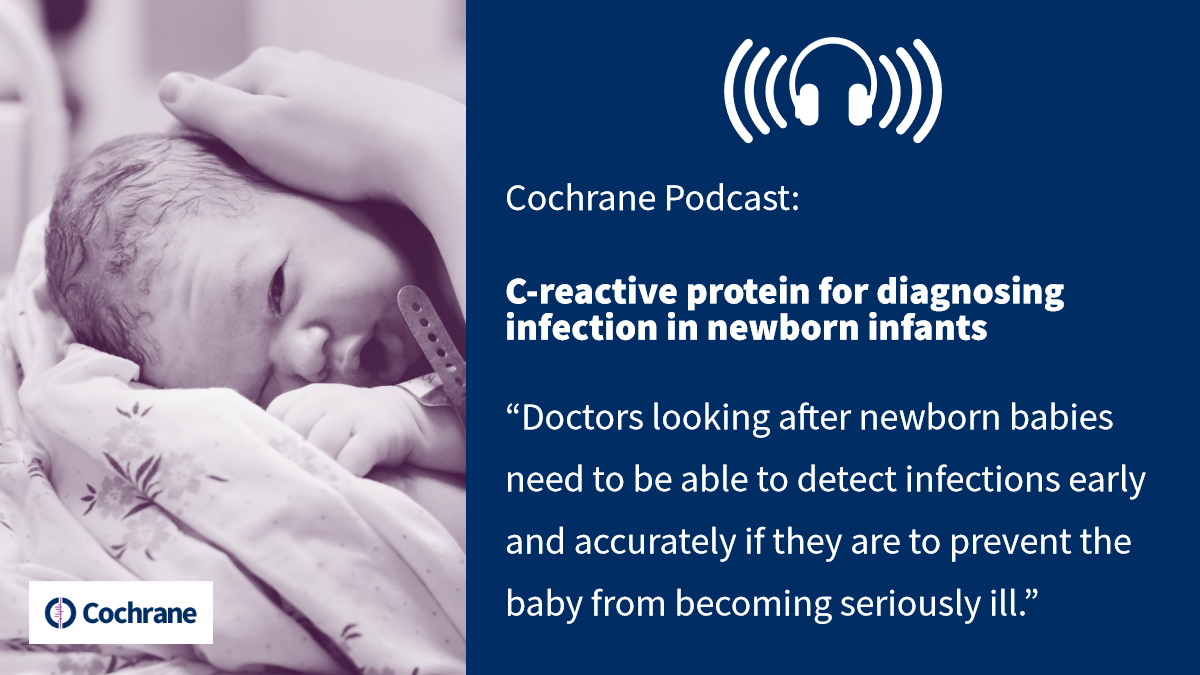
Doctors looking after newborn babies need to be able to detect infections early and accurately if they are to prevent the baby from becoming seriously ill. One of the tests suggested for doing this is to measure their c-reactive protein and this was assessed in a new Cochrane Review in January 2019. We asked the lead author, Jennifer Brown from the Centre for Reviews and Dissemination at the University of York in the UK, to tell us why this review is so important and what it found.

"Getting seriously ill with an infection is one of the biggest risks of death for newborn infants, especially those born preterm or unwell. The focus of our review are babies who are more than three days old and contract a so-called late-onset infection while they are in a neonatal intensive care unit, or NICU, for some other reason. We wanted to see if testing their c-reactive protein, or CRP, could diagnose infection accurately and quickly so that appropriate treatment with antibiotics could be given at the earliest opportunity. This is important because these babies are often already receiving many other treatments and investigations, and antibiotics should not be given to them unless they need them.
The clinical signs of infection in newborn babies are non-specific and might be due to other conditions. Some of these are less serious and some will require other kinds of treatment. Therefore, a test called a blood culture is routinely used to see if the baby does have an infection but it can take 24 to 48 hours to get the result. Because the risks associated with infections in newborns are so high and because they can get sicker very quickly, clinicians will typically prescribe antibiotics when they suspect an infection, rather than waiting for the lab result. This means that some babies will receive several days of antibiotics despite NOT having an infection which puts extra unnecessary stress on their already compromised health and also contributes to the bigger problem of antibiotic resistance.Testing the baby’s serum level of CRP, which rises quickly if they do have an infection, has been proposed as a way that might allow a quicker but similarly accurate diagnosis to the traditional blood culture. In our review, we compared the diagnostic accuracy of these two approaches, using information from more than 1600 infants in 20 studies. Most of the studies were published in the last two decades in a variety of countries in Europe, North America, and Asia. Their overall methodological quality was good and the risk of bias was low but we had some concerns about inconsistency in the results of the studies. On the whole, we considered the quality of the evidence to be moderate.
Most of the studies used a threshold level of 5 to 10 mg/L when deciding if a CRP measurement was "positive" for infection. When we extracted and combined data from the included studies, we found that, on average, CRP correctly identified approximately six in every ten babies who were diagnosed with an infection based on their blood culture. It also incorrectly suggested an infection in about a quarter of the babies who did not have one.
To place this in a broader context, imagine that 40% of these high-risk newborn babies will develop a late-onset infection, which would be in keeping with what was found in the studies in our review. If we use this figure and our findings and imagine a group of 1000 babies, using CRP alone would miss 152 out of the 400 cases of infection and it would wrongly diagnose infection in 156 of the 600 babies without the condition.
This leads us to the conclusion that using the serum level of CRP when an infection is suspected in a newborn is not sufficiently accurate to diagnose infection or decide which babies should or should not be prescribed antibiotics. Tests that speedily and accurately diagnose infection in newborns are still needed and we suggest that future research might focus on other biomarkers, such as procalcitonin, or new technologies, like molecular assays, to fill this gap."
